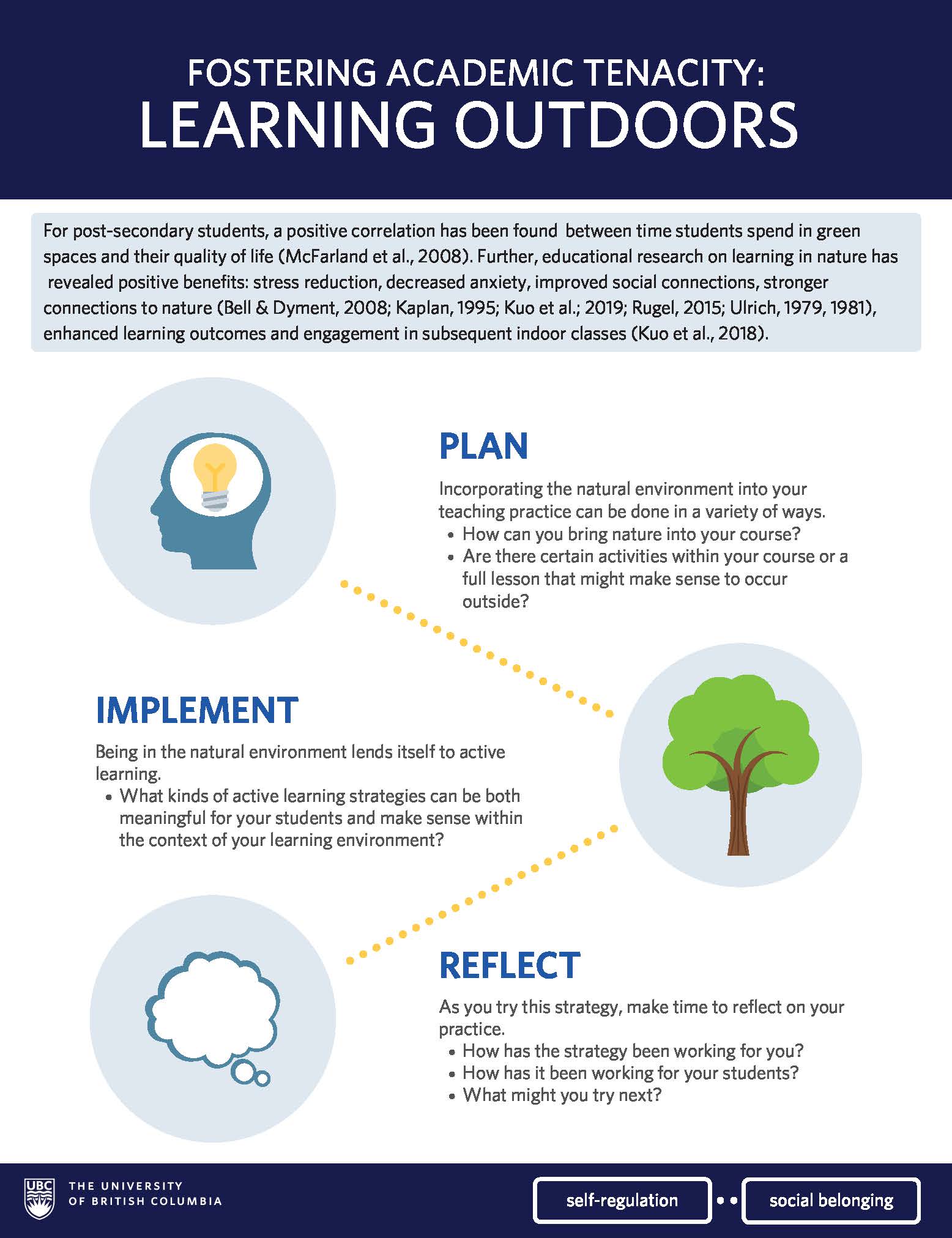For post-secondary students, a positive correlation has been found between the time students spend in green spaces and their quality of life (McFarland et al., 2008). Further, K-12 educational research on learning in nature has revealed positive benefits: stress reduction, decreased anxiety, improved social connections, stronger connections to nature, (Bell & Dyment, 2008; Kaplan, 1995; Kuo et al., 2019; Rugel, 2015; Ulrich, 1979, 1981), enhanced learning outcomes, and engagement in subsequent indoor classes (Kuo et al., 2018).
Promising Practice
Selected References and Measures
Go Further

Recommended Citation: Health Promotion & Education, UBC. (2019). Fostering academic tenacity: Taking learning outdoors. Retrieved from: wellbeing.ubc.ca/wble
We gratefully acknowledge the financial support for this project provided by UBC Vancouver students via the Teaching and Learning Enhancement Fund.